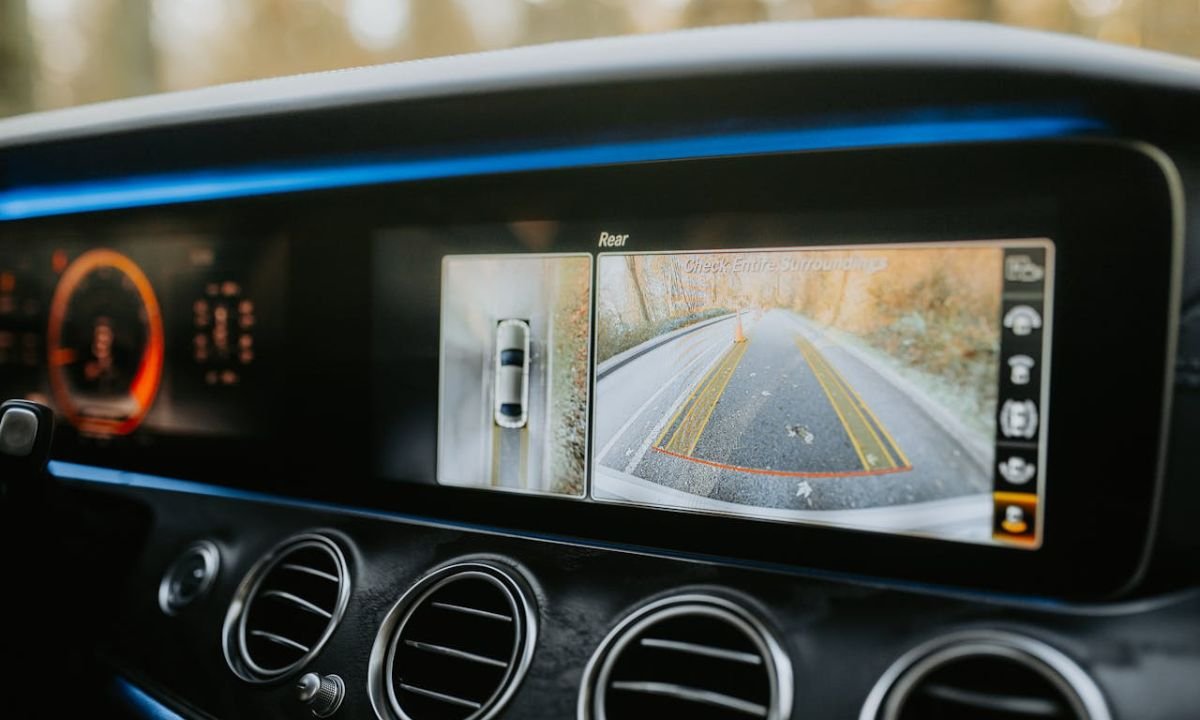The automotive industry has seen tremendous advancements over the years, with safety technology being one of its most crucial focuses. Modern vehicles come equipped with a range of intelligent systems that actively work to reduce the risk of accidents and enhance the driving experience. These safety features not only protect drivers and passengers but also play a significant role in preventing accidents, safeguarding pedestrians, and creating a more secure road environment. This article explores the top car safety technologies that have been designed to help prevent accidents.
The Importance of Car Safety Technologies
While no technology can entirely prevent accidents, many innovations have proven effective in reducing the likelihood and severity of crashes. With features like automatic braking, lane departure warnings, and vehicle-to-vehicle communication, today’s cars are better equipped to handle unexpected situations on the road. By supporting drivers with these advanced systems, manufacturers aim to address human errors, the leading cause of most traffic accidents.
Key Safety Technologies for Modern Vehicles
Car safety features can be grouped into various categories, each playing a unique role in preventing accidents. Let’s explore some of the most impactful ones in detail.
Automatic Emergency Braking Systems (AEB)
Automatic Emergency Braking (AEB) is one of the most important advancements in car safety technology. This system uses sensors to monitor the distance between your car and the vehicle ahead, detecting potential collisions and applying the brakes automatically if the driver does not respond in time.
Types of AEB Systems
There are two main types of AEB systems:
- Crash Imminent Braking (CIB): Applies the brakes when a collision is almost certain, even if the driver fails to act.
- Dynamic Brake Support (DBS): Provides additional braking power if the driver attempts to brake but doesn’t apply sufficient force.
AEB systems are especially effective in preventing rear-end collisions, which account for a significant portion of accidents each year.
Lane Departure Warning and Lane-Keeping Assist
Another feature enhancing road safety is the Lane Departure Warning (LDW) system, which uses cameras to detect lane markings on the road. If the driver drifts out of their lane without signaling, an alert sounds, prompting them to correct their position. Some vehicles also come with Lane-Keeping Assist (LKA), which actively steers the car back into the lane if it senses that the vehicle is unintentionally drifting.
How Lane Departure Warning and Lane-Keeping Assist Prevent Accidents
Lane departure technologies are beneficial in preventing:
- Sideswipe Collisions: By alerting drivers who might veer into adjacent lanes.
- Single-Vehicle Crashes: Particularly on highways or rural roads where drifting out of a lane can lead to catastrophic accidents.
Blind Spot Detection
Blind Spot Detection (BSD) technology is designed to help drivers detect vehicles in their blind spots, which are areas around the car that cannot be directly observed through mirrors. When another vehicle enters this area, a light or audio alert is activated, warning the driver.
Why Blind Spot Detection Matters
Blind spot accidents are common, especially when changing lanes. BSD technology provides:
- Enhanced Awareness: Drivers are immediately alerted when another car is in their blind spot, reducing the chances of collisions during lane changes.
Adaptive Cruise Control (ACC)
Adaptive Cruise Control (ACC) enhances traditional cruise control by automatically adjusting your car’s speed to maintain a safe following distance from the vehicle ahead. ACC relies on radar and camera sensors to monitor traffic conditions and adapt accordingly.
Benefits of Adaptive Cruise Control
- Reduced Driver Fatigue: ACC makes long-distance driving less tiring by handling speed adjustments in congested or fluctuating traffic conditions.
- Accident Prevention: By maintaining a safe following distance, ACC reduces the risk of rear-end collisions caused by sudden stops.
Forward Collision Warning (FCW)
Forward Collision Warning (FCW) is a system that detects vehicles or objects in front of the car and warns the driver of an imminent collision. FCW does not apply the brakes but provides an alert, allowing the driver to take action.
Advantages of Forward Collision Warning
FCW systems are particularly beneficial for:
- Distracted Drivers: It helps catch the attention of drivers who might be momentarily distracted, reducing the chance of a car accident.
- Enhanced Reaction Time: By alerting the driver, FCW enables faster reactions in situations where braking is necessary.
Backup Cameras and Rear Cross-Traffic Alert
Backup cameras have become standard on most vehicles, providing drivers with a clear view of what’s behind their car. Rear Cross-Traffic Alert (RCTA) takes this a step further by warning the driver of approaching vehicles or pedestrians when reversing out of a parking space.
How Backup Cameras and RCTA Prevent Accidents
- Reduced Blind Spots: Cameras and alerts make it easier to spot objects that are not visible through mirrors.
- Enhanced Pedestrian Safety: RCTA detects pedestrians or vehicles that may cross the car’s path while backing up, reducing the likelihood of accidents in parking lots.
Electronic Stability Control (ESC)
Electronic Stability Control (ESC) prevents skidding and helps drivers maintain control during sharp turns or slippery conditions. ESC monitors the vehicle’s movements and applies brakes to individual wheels if it detects a loss of traction, ensuring the car remains stable.
Why Electronic Stability Control is Essential
ESC is particularly valuable in:
- Adverse Weather Conditions: It helps prevent accidents caused by rain, snow, or ice.
- Loss of Control Situations: By assisting the driver in regaining control, ESC can prevent rollover and single-vehicle accidents.
Advanced Headlight Technologies
Headlights play a critical role in road safety, particularly at night or in low-visibility conditions. Adaptive Headlights adjust the direction and intensity of the beam based on the car’s speed and steering angle, providing better visibility around curves.
Benefits of Adaptive Headlights
- Enhanced Visibility: Drivers can better see obstacles or pedestrians in their path, reducing the risk of night-time accidents.
- Reduced Glare: Adaptive headlights help prevent glare for oncoming traffic, improving road safety for all drivers.
Vehicle-to-Vehicle (V2V) Communication
Vehicle-to-Vehicle (V2V) communication is a groundbreaking technology that enables cars to communicate with each other, sharing information such as speed, location, and braking status. This data helps vehicles anticipate and avoid potential collisions.
The Future of V2V Communication
While still in the early stages, V2V technology has the potential to revolutionize road safety by:
- Reducing Traffic Congestion: Vehicles can adjust speed and routes in real time to avoid congested areas.
- Preventing Collisions: By knowing the position of nearby cars, V2V communication can alert drivers to potential hazards well in advance.
Drowsiness Detection Systems
Drowsiness detection systems monitor a driver’s behavior, such as steering patterns and eye movements, to detect signs of fatigue. If the system detects that the driver may be falling asleep, it issues a warning to encourage them to take a break.
How Drowsiness Detection Enhances Safety
- Accident Prevention: By detecting early signs of drowsiness, these systems help reduce the risk of accidents caused by fatigued driving.
- Improved Long-Distance Safety: Long road trips, particularly on highways, become safer with drowsiness alerts.
Traction Control Systems (TCS)
Traction Control Systems (TCS) are designed to prevent wheel slip during acceleration, particularly on slippery surfaces. By adjusting the engine power and braking, TCS helps maintain traction, providing better control over the vehicle.
The Impact of TCS on Road Safety
- Improved Stability: TCS reduces the risk of skidding and loss of control.
- Weather Adaptability: It allows drivers to navigate wet, icy, or snowy roads more safely.
What’s Next for Car Safety Technologies?
As car safety technology continues to evolve, we can expect even more advanced systems that integrate AI, machine learning, and connectivity. Fully autonomous vehicles may become mainstream, reducing the risk of human error and making roads safer. However, the technologies discussed here already represent a significant leap forward in accident prevention and driver support.
Conclusion
Car safety technologies have transformed the way we drive, making the roads safer for everyone. From automatic braking to adaptive headlights, each of these features plays a critical role in accident prevention. As technology advances, the potential for further reducing traffic-related injuries and fatalities continues to grow, paving the way for a safer future on the road.











